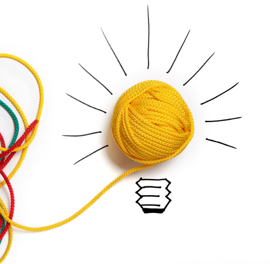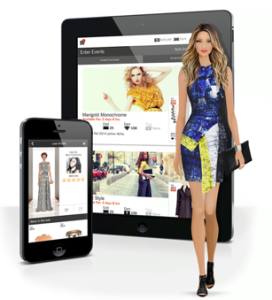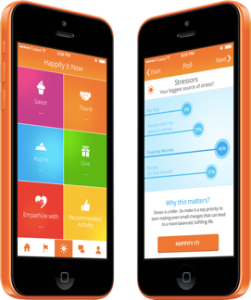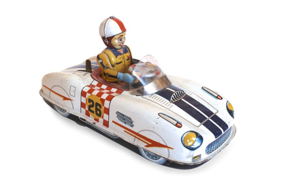5 powerful design hacks for building a better product in less time
 For the past year, I’ve been running a series of high-learning experiments in design acceleration. These experiments are based around a step-by-step system called Getting2Alpha – focused on testing your ideas with the right early customers using game design thinking and techniques. I’ve run 19 teams through the program, and learned a lot about setting up the right conditions and mindset for rapid and effective design iteration.
For the past year, I’ve been running a series of high-learning experiments in design acceleration. These experiments are based around a step-by-step system called Getting2Alpha – focused on testing your ideas with the right early customers using game design thinking and techniques. I’ve run 19 teams through the program, and learned a lot about setting up the right conditions and mindset for rapid and effective design iteration.
One result from this experiment is crystal-clear: these 5 actionable design hacks can reliably accelerate early product design – and are highly correlated with startup success. When my clients applied these hacks with open, scientific mindset, they saw MASSIVE acceleration on their path to product/market fit. And when they didn’t adopt this mindset — and resisted applying the hacks — the project went sideways.
Who needs design hacks?
So who actually NEEDS these design hacks? Where’s the fertile ground? To find out, simply take this short quiz:
 Do you need to accelerate the pace of your early design and development efforts? [Y] [N]
Do you need to accelerate the pace of your early design and development efforts? [Y] [N]- Is it tough to filter all the feedback coming at you from different angles — and identify the right handful of people to listen to? [Y] [N]
- Do you struggle to turn your engaging product vision into a simple, stripped-down MVP with “just enough” fidelity to test your assumptions? [Y] [N]
If you answered YES to 2 or more of these questions, these design hacks can save you and your team months of time and thousands of $$ — and help you avoid a lot wasted effort.
Early Product Design is Hard
Early product design is my specialty. I’ve helped dozens of teams bring their innovative ideas to life – including genre-defining hits like Rock Band, The Sims, eBay, Ultima Online, Covet Fashion, and Happify – plus games, products & services for Disney, Netflix, Electronic Arts, Lumosity, the New York Times, and many others.
The early stage of product development is fun and exciting – but also really, really hard. It’s tough to figure out how to test your ideas quickly, and avoid going down expensive cul-de-sacs. And there’s no simple, repeatable recipe for success – every team needs to test and iterate their own unique path to product/market fit.
Habits, Culture & Design Hacks
 I’ve noticed that the best teams – the ones that actually produce breakthrough hits – share certain habits during early development, and building those habits into your culture can dramatically increase your odds of success.
I’ve noticed that the best teams – the ones that actually produce breakthrough hits – share certain habits during early development, and building those habits into your culture can dramatically increase your odds of success.
I often work with startups with a limited runway, and they’ll ask: “How can we make 6 months of progress in 6 weeks?” I’ve spent the last few years intent on answering this question, and I’ve found a process that gets my clients 80% of the way there in 20% of the time. Let me tell you about 2 very different projects — a mobile cooperative fashion game, and an innovative mental health app – that used these design hacks to super-charge their path to product/market fit.
A Tale of Two Startups
 Covet Fashion was created by Crowdstar – a mobile games studio. They came to me with an exciting idea for a cooperative game based on real-world designer fashions. They needed to reach beyond their core audience, and find a way to delight non-gaming fashionistas.
Covet Fashion was created by Crowdstar – a mobile games studio. They came to me with an exciting idea for a cooperative game based on real-world designer fashions. They needed to reach beyond their core audience, and find a way to delight non-gaming fashionistas.
First, we clarified their strategy and outlined their design & monetization constraints. We quickly built an Early Adopter Funnel to connect with – and learn from – this new, aspirational audience. We setup regular play-testing sessions early in development – uncomfortably early for some team members – and used that feedback to create a stripped-down Alpha build of the game.
Connecting with the right early adopters helped the entire team quickly test and refine their assumptions – and create an Alpha build that delighted their aspirational audience. Today – three years later – Covet Fashion is a highly profitable evergreen hit with thousands of happy (paying) customers. And it all started by setting the goal of making 6 months of progress in the first 6 weeks.
 Now let’s see how Happify — an innovative digital health service – used a few smart design hacks to super-charge their MVP process. Happily was the brainchild of two brilliant entrepreneurs from the gaming industry. They came to me with an exciting idea for a digital happiness service – based on their own transformative experience with science-based happiness exercises. They needed to quickly flesh out and test their idea, find their early market, and prove their business model.
Now let’s see how Happify — an innovative digital health service – used a few smart design hacks to super-charge their MVP process. Happily was the brainchild of two brilliant entrepreneurs from the gaming industry. They came to me with an exciting idea for a digital happiness service – based on their own transformative experience with science-based happiness exercises. They needed to quickly flesh out and test their idea, find their early market, and prove their business model.
We clarified their product vision and revenue model, identified and interviewed early adopters, prototyped & tested their product ideas, & iterated the product based on early customer feedback. In doing so, we learned that Early customers wanted something that felt like Pinterest – with the motivational pull of a game. Using those insights, we built a product that delighted and hooked our early customers – and in doing so, carved out a new niche in health services. Happify is now the market leader in digital happiness, with thousands of paying subscribers who are getting happier every day.
Turbo-charge your MVP
Can you imagine getting these kind of results for your project?

- What if you could dramatically accelerate your team’s early design and development process?
- What if you could quickly find and learn from EXACTLY the right customers – and use those conversations to laser-focus your efforts?
- What if you could turn those customer insights into a simple yet compelling MVP – something with “just enough” fidelity to test your assumptions?
Over the next few weeks, I’ll share more stories about how smart teams have used time-saving design hacks to super-charge their path to product/market fit. For a sneak peek, join us Thu Sep 10th at 11 AM for this #LeanStartup webinar, where I’ll be offering a quick overview of our approach to accelerating product design and taking questions LIVE. Hope to see you there!